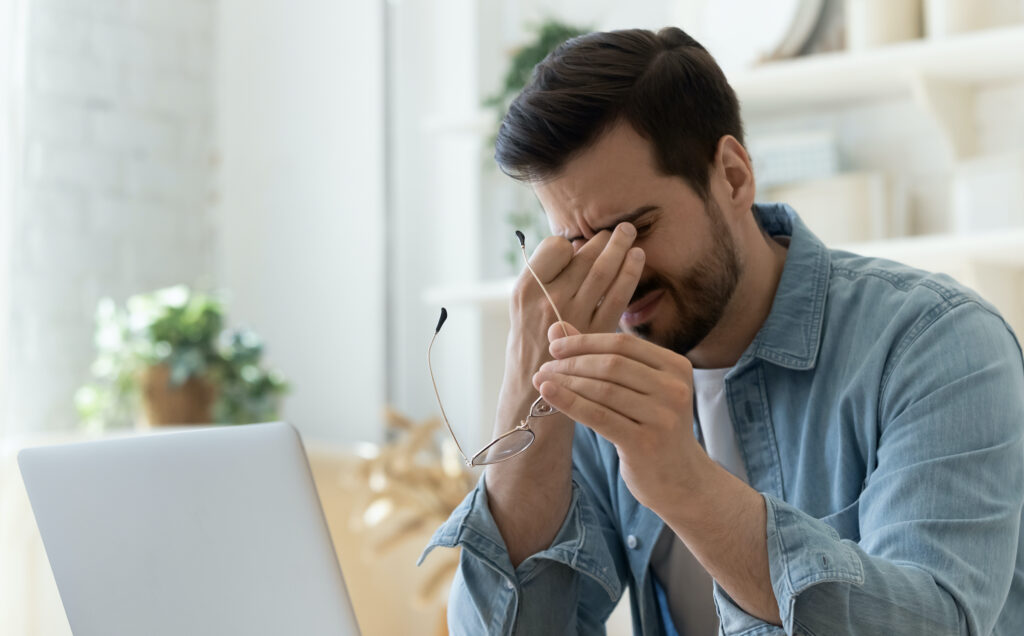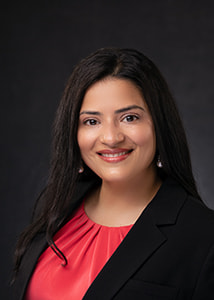Dry Eye

What Is Dry Eye?
Do you have red, watery, tired, or gritty eyes? You might be suffering from chronic dry eye. The expert team at North Georgia Eye Associates is here to treat eye conditions like dry eye syndrome and help your eyes get the relief they deserve.
Dry eye is an eye condition that occurs when the eyes cannot produce enough tears or the tears produced are low in quality. The tear film is a complex structure composed of three layers.
The oil layer is the protective layer of the tear film and prevents evaporation of tears. If there is an insufficient oil layer, the tears evaporate too quickly, resulting in dry eyes.
Dry eye syndrome affects millions of people every day. Causes range from aging to environmental irritants to pre-existing medical conditions.
If you are experiencing dry eye syndrome, our dry eye specialists at North Georgia Eye Associates can create a treatment plan to improve your symptoms.
What is Dry Eye Syndrome?
Dry eye syndrome is an eye condition that affects many people worldwide. If you are experiencing dry eye syndrome, our dry eye specialists at North Georgia Eye Associates can create a treatment plan to improve your symptoms.
To properly function, your cornea needs to be moisturized. Your tears, made of three different layers, provide this lubrication.
Layers of the Eye
Outermost Layer
The outermost layer of the tear film is the lipid layer made of oil. This layer ensures that the tears adhere to the cornea and do not evaporate too quickly.
Middle Layer
The middle layer is water and is the largest of any layer. This layer provides nutrients to the cornea to keep it healthy.
Innermost Layer
The innermost layer of the tear film is the mucin layer. The mucin layer is composed of mucus and helps the eye stay lubricated.
What are the Symptoms of Dry Eye Syndrome?
The symptoms of dry eye can differ from person to person. The most common dry eye symptoms are:

Diagnostic Tests for Dry Eye
If your North Georgia Eye Associates ophthalmologist believes you may have dry eye syndrome, we may have you undergo diagnostic tests. We offer the following to help diagnose dry eyes in patients:
SPEED Questionnaire
The SPEED (Standardized Patient Evaluation of Eye Dryness) Questionnaire calculates a score that shows the severity of dry eye symptoms. This information helps your eye doctor better understand how dry your eyes are and how much your symptoms bother you.
TearLab
TearLab is a diagnostic test that measures the tear film’s osmolarity, which helps diagnose ocular surface disease. Osmolarity means the concentration and content of salt and other dissolved substances in a liquid.
Osmolarity is vital for knowing if you have dry eyes because if your tears have an abnormal osmolarity content, it is often an indicator of an imbalance in your tear composition and a tear film that’s unstable.
InflammaDry
InflammaDry is a test that can detect MMP-9. MMP-9 is an inflammatory marker in the tear film. InflammaDry collects a small sample of tears from the lower eyelid and then tests the tears in a reader.
Results are provided within minutes. If they are positive, it indicates the presence of elevated MMP-9 levels, which often correlates with eye surface inflammation and potential dry eye disease.
LipiView
The LipiView Ocular Surface Interferometer is an ophthalmic imaging device that captures, analyzes, and stores digital images of tear film. Using these images, the LipiView Interferometer measures the absolute thickness of the tear film lipid layer and analyzes your blinking patterns.
The test also provides critical information that helps differentiate between different types of dry eye disease and enables your physician to determine an appropriate treatment plan.

Common Causes of Dry Eyes
Treating Dry Eyes at North Georgia Eye Associates
After a thorough evaluation and determining the root cause of your dry eye, your eye doctor will formulate a treatment plan. You must stay diligent in following the treatment plan to improve your symptoms.
If your eye doctor puts you on a regimen you can do at home and you don’t see results, they may recommend in-office procedures and treatments.
Lubricating Eye Drops
Lubricating eye drops are artificial tears that you can buy over the counter. These drops help your eyes stay moisturized when natural tears do not naturally accomplish this.
Dry Eye Vitamins and Supplements
Your eye doctor may recommend adding more vitamins or supplements to your diet. Omega-3 fatty acids and vitamin A can help your eyes produce high-quality tears to lubricate the surface of your eyes.
Punctal Plugs
Punctal plugs are tiny medical devices that an eye doctor can implant into the drainage channel of your eyes. These plugs help reduce the number of tears leaving the surface of your eyes.
Allowing the tears to stay longer on your cornea will improve dry eye symptoms. Your eye doctor can implant punctal plugs during a quick, in-office procedure, and you can have your eye doctor remove them at any time.
Medicated Drops and Ointments
When over-the-counter eye drops do not adequately reduce your symptoms, your eye doctor may recommend starting prescription eye drops.
These prescription eye drops and ointments can take time to produce results. It is essential to stay consistent with your regiment to notice an improvement in your symptoms.
LipiFlow
LipiFlow is an in-office treatment your eye doctor can perform to improve the quality of your tears and dry eye symptoms. The LipiFlow device can help your meibomian glands produce oils to lubricate the surface of your eye.
The treatment is quick, lasting only about twelve minutes per eye. You will likely notice an improvement in your symptoms in the coming days after the treatment.
TearCare
The TearCare treatment also aims to increase oil production to promote healthier tears. TearCare’s wearable eyelid technology massages and gently heats the oil glands on your eyelids during treatment.
This process encourages the oil to flow out of the glands and lubricate the cornea. The TearCare treatment is also a quick, in-office procedure.
BlephEx
Blepharitis is a chronic inflammatory condition of the eyelids caused by the overgrowth of normal bacteria that live along the base of the eyelashes. BlephEx is a small micro-sponge device used as an in-office treatment performed directly by your eye care provider to eliminate scrub, debris, and inflammatory build-up from your eyelid.
By removing the inflammatory components, the overall health of the eyelid is improved. Patients can then find relief from chronic dry eye symptoms.
Intense Pulsed Light (IPL)
IPL is a painless procedure. First, the doctor applies IPL shields to protect the eyes from the light.
Then, a thin layer of cooling gel is applied to the treatment area. Next, a small handheld device is used to administer pulses of light to the eyelids and surrounding area.
Treatments are repeated once a month for four months, though significant improvement is seen in most cases with one or two treatments. After the initial treatment, most patients report some improvements in their symptoms. All patients need maintenance therapy at least once a year.







